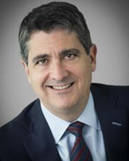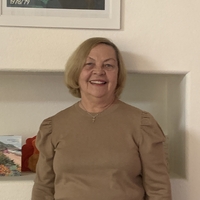Aortic Valve Repair: Where Are We Today?
Written By: Allison DeMajistre, BSN, RN, CCRN
Medical Expert: Eric Roselli, MD, Chief of Adult Cardiac Surgery, Cleveland Clinic, Cleveland, Ohio
Reviewed By: Adam Pick, Patient Advocate, Author & Website Founder
Published: August 14, 2025
Aortic valve disorders are complex. There is no one-size-fits-all solution when it comes to treatment. Surgical or transcatheter valve replacement is often the preferred treatment for many patients with severe aortic insufficiency because it is a more standardized approach. Unfortunately, bioprosthetic valves typically degenerate after 10 to 15 years and mechanical valves require lifelong anticoagulation therapy. Aortic valve repair can be a preferable long-term option for many patients with aortic valve regurgitation, despite its complexity and the need for specialized surgical expertise.
To learn more about surgical aortic valve repair as a viable patient option, Adam Pick, the aortic valve patient who started HeartValveSurgery.com, recently met with Dr. Eric Roselli, Chief of Adult Cardiac Surgery at the Cleveland Clinic in Cleveland, Ohio. Dr. Roselli has been at the Cleveland Clinic for over 25 years and has performed thousands of aortic valve procedures. When it comes to aortic valve repair, Dr. Roselli is a world-renowned expert who educates his patients and physicians about the long-term value of preserving the patient’s aortic valve tissue.
Advantages of Aortic Valve Repair
Here are the key insights shared by Dr. Roselli:
- After performing thousands of aortic valve procedures, where are we today with aortic valve repair? “At these national meetings, we talk about cutting-edge stuff,” said Dr. Roselli. “Aortic valve repair has been around for a while, and actually, a lot of this work was done at the Cleveland Clinic with Dr. Toby Cosgrove, who was one of the innovators in this space. We’ve been slowly improving our understanding of repairing aortic valves over the last 20 or 30 years. It’s a little more complex than repairing mitral valves, but the main objective is the same.
- Saving living tissue aids with healing and durability. “We want to save the living valve,” said Dr. Roselli. “The aortic valve takes a beating, but if it’s alive, it can heal itself from that daily wear and tear. Your heart beats 100,000 times a day, right? So if we can save a living one, that’s awesome. The idea of an aortic valve repair is to get it back to a good mechanical state so it can handle the load conditions and then it can heal itself.”
- Valve repair is not for all patients with aortic valve disease. “It’s not for everybody for two reasons,” Dr. Roselli said. “First, we have to have a healthy substrate to work with. One of the more common problems is aortic stenosis. If you have aortic stenosis, your valve will not be repairable because the tissue is degenerated and calcified. Back in the day, they would peel calcium off and clean the valve. They would get a repair that looked awesome at the end, but then it wore out in a couple of years.
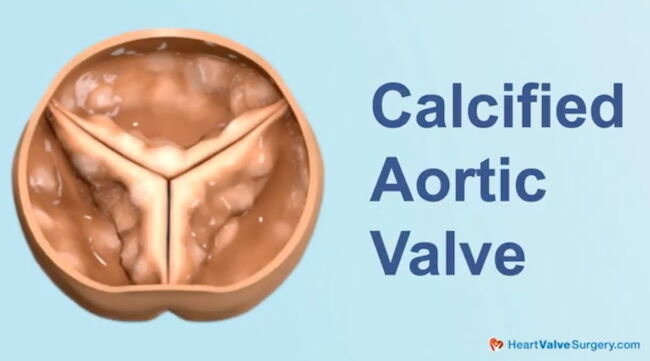
- Which patients are the best candidates for aortic valve repair? “People with pure aortic regurgitation like those with bicuspid valves, some with tricuspid valves, many who have a dilated aortic root, and younger patients,” said Dr. Roselli. “If the moving parts, the leaflets, are healthy tissue, and you have a surgeon who is adept at repair, it’s kind of an artistic operation. More and more surgeons are learning the skills, and it’s become the first choice over any replacement option because of this idea that we’re saving the living valve.”
- Going into surgery, it is never certain that the valve will be repairable. “I repair a ton of valves, and I always give patients a percentage chance of me being able to save the valve based on the imaging. I can have a sense of how repairable a valve is, but I never say it’s 100 percent. I think I can repair any valve, but it’s not about whether I can; it’s whether I should. Sometimes, we get in there and, despite the imaging, we see that the tissue doesn’t look like something we should be keeping because it’s beat up and appears ‘moth-eaten.’ It’s got to go.”
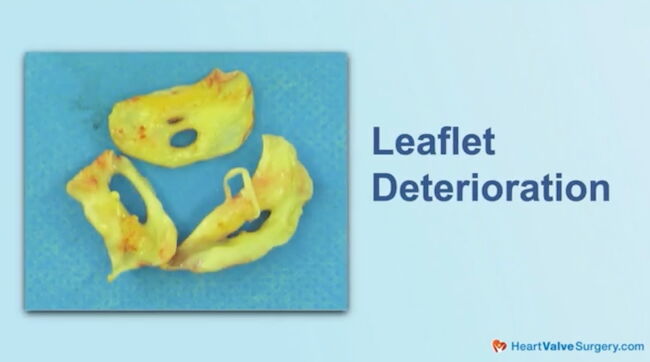
- There have been many advances in aortic valve repair techniques. “The early techniques were just focused on the leaflets themselves,” said Dr. Roselli. “Now, there is a greater appreciation of how the aortic valve functions, which requires a stable structure of the entire aortic root. It’s been exciting to learn and apply the repair to even more complex morphologies and patterns of disease. One thing is certain, you will need to be at a specialized center for that. If a center is doing one a month, ten a year, that’s a pretty high volume. We do about 100 per year, repairing valves a couple times a week.”
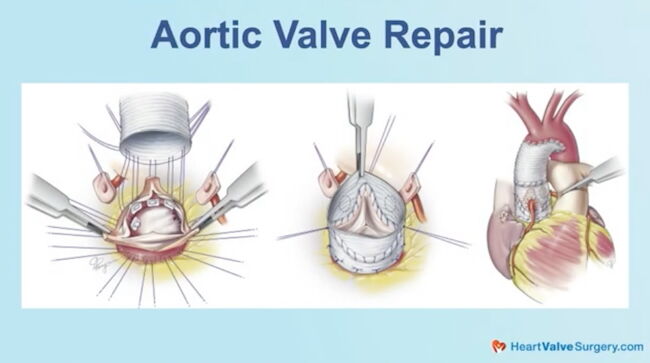
- There is always a detailed plan before the surgery. “We go to the operating room like we have to make that game time decision when we get in there,” said Dr. Roselli. “We always go in with a plan, which is important for patients to understand. We’ll talk about all the different valve choices. Repair might be plan number one. But then we have Plan B, C, and D, because I can’t wake you up in the middle of the operation to ask what you want. We will talk through that, and it’s a good discussion. I think patients appreciate the whole idea about valve choice.”
- Roselli stressed that patients shouldn’t get too overwhelmed. “When going through the decision-making process, it may seem complicated. Don’t get too overwhelmed by it. It’s okay because all the choices are good. The most important thing about doing a valve operation is that you’ve got a well-functioning valve at the end, which is good for your heart. If we take care of your heart by taking care of your valve, then it can last a lifespan or get you back on track to have a normal lifespan. It’s about saving your heart, and we have many new options available to patients.
- HeartValveSurgery.com has become an excellent resource for patients. Dr. Roselli told Adam, “It’s awesome what you provide with services like this. Patients often come to see us and are very knowledgeable. We have great discussions and can proceed together with a very clear plan of what we may encounter and how we will work through it.”
Thanks Dr. Roselli and the Cleveland Clinic!
On behalf of all the patients in our community, thank you, Dr. Eric Roselli, for everything you and your team are doing at the Cleveland Clinic in Cleveland, Ohio!
Related links:
- Dr. Roselli’s Aortic Valve Patient Success Story: Ari Mintzer
- Ask Dr. Roselli: The Advantages of Valve-Sparing Procedures for Bicuspid Aortic Valves
- NHL Superstar, Henrik Lundqvist, Interviews Dr. Eric Roselli, His Heart Surgeon
Keep on tickin,
Adam
P.S. For the deaf and hard-of-hearing members of our patient community, we have provided a written transcript of our interview with Dr. Roselli below.
Video Transcript:
Adam Pick: Hi, everybody. It’s Adam with HeartValveSurgery.com. And we are in Los Angeles, California at the Society of Thoracic Surgeons Conference. I’m thrilled to be joined by Dr Eric Roselli, who is the Chief of Adult Cardiac Surgery at the Cleveland Clinic in Cleveland, Ohio.
Dr. Roselli. I’m going to call you Eric for the rest of this interview because we’ve known each other for 30 years. Good to see you again.
Dr. Eric Roselli: Yeah, same Adam.
Adam Pick: Just so everybody knows, we met first at the University of Michigan about 30 years ago.
We’re here at STS and we’re answering some really good questions and talking about some of the big themes that are happening here with these great surgeons at presentations and talks.
One of the big ones is about aortic valve repair, which doesn’t, I think, get enough coverage. And what I know about you is in the years we’ve been educating patients, you have talked over and over again about saving living tissue in the human heart. So can you tell us, it’s 2025, you’ve been at the Cleveland Clinic for how long now?
Dr. Eric Roselli: 28 years this year.
Adam Pick: You’ve done thousands of aortic valve procedures. Where are we today with aortic valve repair?
Dr. Eric Roselli: It’s cool. At these national meetings, we talk about cutting edge stuff. Aortic valve repair has been around for a while, and actually, a lot of this work was done at the Cleveland Clinic with Dr. Toby Cosgrove was one of the innovators in this space. And so, 20, 30 years that we’ve been slowly improving the way in our understanding of repairing aortic valves. It’s a little more complex than repairing mitral valves, but the principle, you know, the main objective is the same.
As you said, like, we want to save the living valve in somebody, because that’s a valve that aortic valve takes a beating. But if it’s alive, it can heal itself from that daily wear and tear. Your heart beats 100,000 times a day, right? So if we can save a living one, that’s awesome. The idea of an aortic valve repair is is to get it back in a good mechanical state so it can handle sort of the load conditions and then it will be able to heal itself.
It’s not for everybody for two reasons. One is a really important principle is we have to have a healthy substrate to work with. So, one of the more common problems for probably the more common problem for aortic valve is aortic stenosis.
If you have aortic stenosis, your valve is not going to be repairable because the tissue itself is degenerated. It’s calcified. Back in the day they were pealing calcium off and cleaning all this stuff off and they’d get a repair that looked awesome at the end. And then it wore out in a couple of years.
But, people with pure aortic regurgitation, so it’s a lot of patients with bicuspid valves, and some patients with tricuspid aortic valves, and many patients who have a dilated aortic root, so younger patients, if the moving parts, the leaflets, are healthy tissue, and you have a surgeon who’s adept at repair, it’s a very kind of artistic operation. But, there’s more and more surgeons are learning the skills, uh, it’s a really great choice.
Probably Choice number one over any replacement option because it’s this idea we’re saving the living valve. However, I will tell you and I repair a ton of valves, I think relatively speaking, I always tell patients what I think their percentage chance of me being able to save it based on some of the imaging that I look at.
I can have a sense of how repairable I think a valve is, but I never say it’s 100% what we’re going to do, even though I think I can repair any valve. It’s not about whether I can, it’s whether I should. Sometimes we get in there and despite the imaging, we see that tissue doesn’t look like something we should be keeping because it’s, it’s been beat up, it’s kind of like moth-eaten looking sort of tissue or something. It’s got to go.
But, there’s been a whole bunch of advances in sort of the techniques. The early techniques were sort of just focused on the leaflets themselves. And now there’s a greater appreciation that the way the aortic valve functions requires kind of a stable structure of the entire aortic root.
That’s been really kind of exciting learning. And so, I think we’re able to apply the repair to even more complex morphologies, which is more complex sort of patterns of disease. But you’re going to need to be at a specialized center for that.
Adam Pick: Got it. And so this, not just specialized, you’re sub specialized now. And so I’m sure patients are wondering, what does that mean? You mentioned you do a ton. In terms of volume and outcomes, are you doing 10 a year? 30 a year? How does that play out?
Dr. Eric Roselli: Well, I’d probably say if your center’s doing, you know, like one a month, 10 a year or something like that, that’s pretty high volume.
We do probably like 100 a year. I should know the answer to that, but it’s a lot. It’s a lot. It’s like every couple times a week, we’ll have that. We go to the operating room though, as I was saying, like we have to make that game time decision when we get in there. Yeah. We always go in with a plan and I think this is important for the patients to understand too.
So, you know, we’ll talk about all the different valve choices. Repair might be plan number one. But then we have plan B. And C, D, because I can’t wake you up in the middle of the operation, ask you what you want, you know, so we, we have to kind of talk through that. And, and that’s a good discussion. I think patients appreciate that whole idea about valve choice.
But when you go through that and I’m talking to the cameras and the patients, when you’re going through that decision making process, and it seems really complicated about what are you going to choose and what do you want as plan A, B, and C. Don’t get too overwhelmed by it. It’s okay because all the choices are good.
Because the most important thing about doing a valve operation is that you’ve got a well-functioning valve at the end, which is good for your heart. If we take care of your heart by taking care of your valve, then your heart can last a life, a lifespan, or get you back on track to have a normal lifespan.
That’s the important thing for patients to understand. Yeah. When it seems so overwhelming. Because it’s about saving your heart. And yeah, there’s a lot of details about the valve stuff that can be a lot, but, you know. It’s cool that we have many new many options available to patients.
Adam Pick: I tell people this has kind of become the “golden age” of valve therapy. It feels like there’s so many options and I loved hearing about uou putting together the plan for all the patients and I’m sure you’re talking to them beforehand – so you’re not waking them up to know what the next play is.
Dr Eric Roselli: What’s awesome like because of what you provide with services like this The patients come to see us and they’re often very knowledgeable about stuff. So, we have great discussions and you know we can at least go in together with like a very clear plan of, what we’re going to run in, what we may or may not run to and how we’re going to work through what we see.
Adam Pick: Well, Eric, as always, great conversations. Thanks for everything you’re doing on behalf of the patients out there at Cleveland Clinic. Really enjoy just hanging out with you as always.
Dr. Eric Roselli: Always. Thanks.
